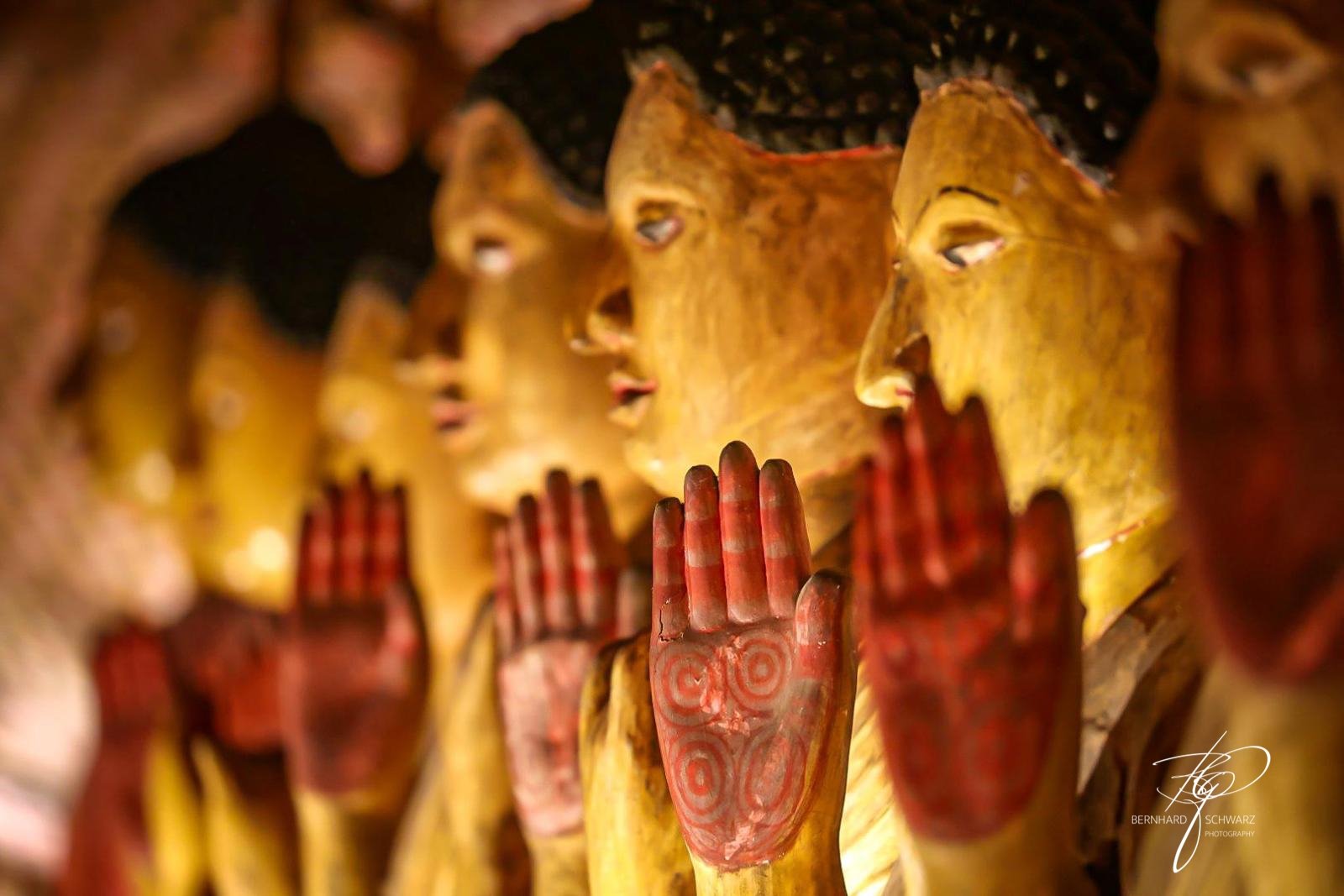This travel guide for Sri Lanka is prepared for our trip participants, though the independent traveler will find practical information and inspiration too. Read on and feel free to ask any questions you might have.
Getting ready for a trip to Sri Lanka in August coinciding with two epic festivals, Kandy Perahera and Jaffna Nallur, is undoubtedly pretty exciting! With a diverse 2-week itinerary that includes exploring Negombo, Kandy, the Cultural Triangle, Trincomalee, and Jaffna, along with hiking in the Knuckles Mountain Range, snorkeling in Trincomalee, and wildlife safaris in Wilpattu and Minneriya National Parks, you’ll experience a mix of culture, nature, and adventure.
Here’s your essential Sri Lanka Travel Guide on what to pack and consider before traveling to this colorful and diverse island nation.


Sri Lanka Packing List and Travel Tips
Clothing, Footwear, and Travel Accessories
Sri Lanka offers year-round holiday opportunities due to its diverse weather patterns, ensuring that there is always a region or coastline with sunny weather. The temperatures remain quite stable throughout the year. Costal areas have temperatures around 25-30°C, while the highlands are cooler at 15-18°C.
Packing for a trip can be tough, especially when it comes to deciding what to bring. You don’t have to buy a whole new wardrobe, but here are some things to consider when packing for your trip to Sri Lanka:
- Lightweight, breathable clothing:
- T-Shirts and Tank Tops: Opt for moisture-wicking and quick-drying fabrics to stay cool.
- Shorts and Light Pants: Comfortable and airy for hot weather.
- Long-Sleeved Shirts and Light Sweaters: For cooler evenings, especially in Kandy and the Knuckles Mountain Range.
- Lightweight Rain Jacket or Durable Rain Poncho: In the tropics, always be prepared for unexpected showers.
- Scarf or Shawl: To cover your shoulders and knees when visiting religious sites.
- Shoes: Wear comfortable, easy to remove shoes.
- Flip-flops: Whether for the beach, accommodation, or the casual walk, they are super practical. They’re also easy to slip on and remove. plus you won’t be surprised by any bugs hiding in your shoes (Maho’s favorite is Crocs Kadee).
- Hiking gear:
- Trainers or Hiking Boots: Comfortable and broken-in trainers or hiking boots for the Knuckles Mountain Range. Unless you are on a multi-day trek, packing a pair of trainers will be sufficient.
- Hiking Socks: Moisture-wicking and cushioned socks to prevent blisters.
- Anti-Leech Socks: To wear over your socks (on our tours, we provide our participants with a pair of anti-leech socks).
- Hat (ideally a wide brimmed hat) and Sunglasses: To protect against the sun during hikes and in general.
- Long trousers that cover your ankles.
- Snorkeling/beach gear:
- Swimwear: Essential for snorkeling in Trincomalee and beach time in Negombo.
- Travel Towel: Quick-drying and compact, useful for beach and snorkel trips. Alternatively a sarong or a hammam (Turkish bath) towel would be also handy in many situations (can be used to cover up, as a towel, sheet and much more).
- Long-sleeve Rash Guard: when spending long hours in the water, it’s the best protection against sun and marine environment.
- Mask & Snorkel: While you can rent, having your own mask and snorkel ensures a better fit and hygiene.
- Travel Accessories:
- Backpack: A daypack for hiking essentials and daily outings.
- Waist bag, a small purse or crossbody bag: For the ease of accessing small items like money or credit cards.
- Reusable Water Bottle: Stay hydrated, especially during hikes.
- Packing Cubes: Practical to organize your luggage. Waterproof bag set or Ziploc bags to protect your valuables from the elements.
- Travel pillow: For long-haul flights if you’d like to bring your own.
- Compression socks for air travel: For a more relaxed and comfortable journey.
- Tips for packing:
- Don’t overpack. The golden rule is: take half of the clothes, double of the money! (and don’t pack anything that you would not use at least once in a week).
- Pack essentials for a day (underwear, swimsuit, toothbrush, fresh clothes, etc.) in your hand luggage, just in case your suitcase doesn’t reach your destination at the same time as you.
- Roll your clothes when packing. Instead of creating a folded pile in your suitcase, rolling allows you to fit more things in. Plus, you can even roll underwear and socks within your clothes for optimal space-saving.
Health and Safety
There are no mandatory vaccinations to enter Sri Lanka, and the country was certified Malaria-free by WHO in 2016. However, we suggest getting up-to-date on tetanus and hepatitis vaccinations. The only defense against Dengue Fever is to prevent mosquito bites.
First-Aid Kit
Generally, a typical traveler needs to bring along the following items as part of their first-aid kit:
- Wound disinfection, bandage material (gauze bandages (8cm), sterile compresses (7.5×7.5cm), etc.),
- Blister plasters, patch plasters,
- Painkiller (e.g. Ibuprofen, Aspirin),
- Medication for motion sickness, diarrhea and constipation,
- Spare glasses, contact lenses (if applicable),
- Eye drops for sore/dry eyes (e.g. long-haul flights),
- Disposable gloves,
- Hand disinfectant,
- Sunscreen with a high sun protection factor (ideally coral reef friendly),
- Mosquito-/insect repellent (with 30-50% DEET) and anti-itch gel,
- Prescription Medications: Ensure you have enough for the entire trip, along with a copy of your prescription.
- Before you leave, check the expiry dates of all items (for liquids and ointments, the expiry date only applies to unopened packages).
We strongly advise that you discuss the composition of your first-aid kit with your family doctor/healthcare provider, as well as obtain a qualified consultation about the recommended vaccinations and stand-by medicine with respect to your personal medical history.
Dealing with Bugs and Mosquitoes
- Apply the mosquito/insect repellent regularly, especially in the evenings when mosquitoes are most active.
- Wearing long sleeves and pants in the evenings can help prevent mosquito bites.
- Consider treating your clothing with permethrin or purchasing pre-treated clothing for added protection.
Dealing with Leeches on the Knuckles Mountain Range Hiking
Leeches are a common concern when hiking in the Knuckles Mountain Range. Here’s a detailed guide on how to prepare for and deal with leeches on the Knuckles:
Before the Hike
- Anti-leech hiking socks: Invest in leech socks, which are long, thick socks that prevent leeches from reaching your skin. They are worn over regular socks and tucked into your boots or shoes (We pre-arrange the socks for our trip members).
- Clothing: Wear light-colored long sleeves and long pants to minimize exposed skin. Tuck your pants into your socks to prevent leeches from crawling up your legs. Lighter colors will help spot them more easily.
- Insect repellent: Use a strong insect repellent containing DEET on your clothing and exposed skin. Some people also use diluted Dettol or similar antiseptics around their feet and legs.
- Permethrin treatment: Treat your clothing with permethrin, an insect repellent that lasts through several washes and is effective against leeches.
During the Hike
- Stay on the trail: Stick to the main paths and avoid walking through dense vegetation, where leeches are more likely to be found.
- Check regularly: Periodically check your legs, feet, and clothing for leeches, especially if you feel a tickling sensation.
- Avoid wet areas: Leeches are more prevalent in wet and humid areas. Try to avoid puddles and streams if possible.
Removing Leeches
- Do not panic: If you find a leech on you, remain calm. Leeches are not dangerous and removing them properly will minimize any discomfort.
- Salt or Dettol: Carry a small container of salt or a bottle of diluted Dettol. Applying either to the leech will make it release its grip.
- Sliding motion: Alternatively, you can use your fingernail or a flat object to slide under the leech’s mouthparts and gently flick it off.
- Clean the area: After removing the leech, clean the bite area with an antiseptic wipe and apply a bandage if necessary. The bite may bleed slightly due to the anticoagulant in the leech’s saliva but should stop after a while.
Post-Hike Care
- Inspect your body: Once your hike is complete, thoroughly inspect your body for any leeches that may have gone unnoticed.
- Clean your gear: Wash your clothing and gear to remove any leeches or eggs that might be present.
- Treat bites: If you have any bites, keep them clean and watch for signs of infection. Most leech bites are harmless but can be irritating.
Enjoying the Hike Despite Leeches
While leeches can be a nuisance, they shouldn’t deter you from enjoying the beauty of the Knuckles Mountain Range. By taking the right precautions and knowing how to deal with them, you can have a safe and memorable hiking experience. During our organized trips, our knowledgeable mountain guides will accompany our group throughout the day and offer assistance whenever needed.
Tech-Gadgets and Documentation
- Smartphone and charger: For navigation, communication, and capturing memories.
- Powerbank: Essential for long days out.
- Universal travel adapter: Sri Lanka uses types D, M, and G plugs.
- Camera: Make sure to have spare batteries/rechargeable batteries and enough storage.
- Torch/Headlamp: Power outages might happen unexpectedly.
- Luggage tracker: To track the location of your luggage or bags.
- Travel Documents:
- Passport and Visa: Ensure your passport is valid for at least six months from the date you arrive in Sri Lanka and have at least three blank pages, two facing each other. Obtain an e-Visa prior to travel if you don’t want to wait in the queue upon arrival (see below for further details).
- Copies of Important Documents: Keep digital (email yourself) and physical copies of your passport, visa, travel insurance, and everything else (to be stored separately from the originals).
- Insurance Documents: Comprehensive insurance coverage for health, travel delays, and adventure activities is recommended.
- Physical paper list of emergency phone numbers: family and friends, embassies (even if they’re on your phone contact list, you can run out of power or lose your phone). We will collect the emergency contact details from our participants shortly before departure to be able to provide assistance in case of emergencies.
- Cards: credit, debit or prepaid. Make sure to contact your bank to find out about any charges you might face when using your card overseas. It’s important to ensure that you have your card authorized for your foreign destination to avoid getting your card blocked due to suspicious activity.
- A piece of paper with your passport number, flight number, hotel address and other relevant information (so you won’t need to search through your papers when it’s time to fill out the arrival card).
Sri Lanka Travel Guide: FAQ About Visas
Types of Visas to enter Sri Lanka
Visa On Arrival (VOA)
Most nationalities can get a 30-day visa upon arrival. You need to pay the visa fee at the counter and the waiting time can be long. The single entry VOA costs $50 USD.
30-Day E-Visa (Single entry):
Free for passport holders from China, India, Indonesia, Russia, Thailand, Malaysia, and Japan. $50 for all other nationalities, plus an online service fee of $10 – $18.5 and a convenience fee.
You can see other visa types and the latest visa fees at this link: https://www.eta.gov.lk/slvisa/ https://www.immigration.gov.lk/index_e.php
Where to apply for E-Visa?
Here is the official website: https://www.immigration.gov.lk/index_e.php https://www.eta.gov.lk/slvisa/
All E-Visa categories are subject to an additional $10 – $18.50 service fee. Additional charges for the payment gateway, taxes, and other transaction fees will be displayed at checkout.
Time the E-Visa approval takes? Few hours to a day. Once the payment is done, you will shortly receive an email with your E-Visa approval. While the email confirmation is sufficient, you may want to bring along a print out of your E-Visa and the proof of payment for the immigration formalities at the airport.
Colombo Airport Arrival Guide
Here is a step by step guide for your arrival in Sri Lanka:
- Everyone should carry these documents:
- Passport.
- Return or onward journey ticket.
- Address/name of the first accommodation in Sri Lanka.
- At Colombo airport, there is a local sim card agency even before reaching the immigration counter. Do NOT buy your sim card there, they are expensive.
- Once you land, connect your phone to airport Wi-Fi.
- You need to fill one Arrival Card, fill in your name, passport number, your port of departure, your hotel name, and flight number. Carry a pen to write these things (Note: on our last visit we were not asked to fill any arrival card). It is also possible to do it online, earliest 72 hours before departure at this link: https://www.immigration.gov.lk/index_e.php.
- After passing through the immigration and collecting your baggage, you will exit the main hall.
- Foreign exchange counter is available after the baggage collection and exit from the main hall (same place as sim cards). You may want to convert some amount of your currency at the airport. The Airport exchange rates may or may not be good (check the current exchange rates beforehand for a healthy comparison). US$ 1 = LKR 300 (approximately).
- You can purchase local sim cards of SLT or Dialog (better speed) at the desks here. You can pay by cash or card.
- Our tour participants will receive a warm welcome at the arrivals hall, where our guide will be happy to organize the local sim cards in advance to skip the lengthy lines at the airport counters as well as sort out money exchange for you. So you can immediately start your fantastic holiday without wasting a minute.
- Welcome to Sri Lanka!
Cultural and Practical Considerations
- Local Currency: Carry some Sri Lankan Rupees (LKR) for small purchases. ATMs are widely available. While credit cards are accepted at some places, it’s best to have small bills on hand for everyday transactions. Remember, when withdrawing cash, consider using People’s Bank ATMs to avoid fees (as of February 2024). In Sri Lanka, cash is the king. We recommend carrying some cash and budgeting around $20 – $50 USD/EUR per day for incidental expenses and tips. Entrance fees for touristic places range from $3 USD to $65 USD and can increase without prior notice.
- Language: English is widely spoken, but learning a few basic phrases in Sinhala or Tamil can be helpful.
- Weather Awareness: Sri Lanka’s climate varies. Coastal areas will be hot and humid, while the highlands are much cooler.
- Respectful Clothing: Cover your shoulders and knees when visiting religious sites. Shoes are removed before entering temples. You may want to carry a pair of socks in your daypack if you don’t want to walk barefoot.
By packing appropriately and considering the local climate, activities, and potential challenges like bugs and mosquitoes, you’ll ensure a comfortable and enjoyable trip to Sri Lanka.
Last but not least, remember that a smile is universal.
Happy travels!
Yours
MAHO on Earth Team
PS: If you landed on this page through search engines and fancy joining our epic Sri Lanka Photography trip in 2025, register now. You can find all communication channels on our contact page. Feel free to chat with us if you need help organizing your dream trip!




